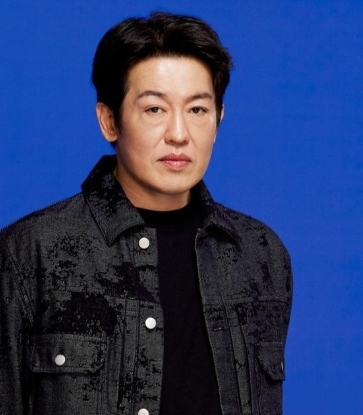Despite the importance of kimchi in Korean cuisine, it is difficult to find high-quality kimchi in Korean restaurants. Perhaps its status as a daily staple lends to it being overlooked.
According to historical records, the earliest versions of kimchi were made from salted mountain vegetables. Different vegetables and spices were introduced during the Joseon Dynasty, and finally with the introduction of chili peppers (gochu) and kimchi cabbage in the late Joseon period, kimchi as we know today was born. A survey conducted in 1995 identified 336 different types of kimchi, including lesser-known varieties like ginseng, jang, pumpkin and seaweed kimchi, alongside the more familiar cabbage and radish varieties.
Chef Kwon Woo-joong, chef-owner of Two-MICHELIN starred restaurant Kwonsooksoo wished to convey the genuine taste of kimchi to his guests. "France has cheese and Germany has sausage, just as we have kimchi. I thought a lot about how to elevate kimchi from a simple side dish to a dish in its own right," he shares. His solution was to make a kimchi cart, a fresh approach to satisfy both Koreans and foreigners. Each evening, six types of kimchi are showcased on gorgeous wooden carts in front of the restaurant's guests, including both familiar and lesser-known varieties.

Hairtail Kimchi
Although vegetables are typically the main ingredient, the diversity used in this beloved Korean dish is so vast that it's often said in Korea that everything can be made with kimchi. Accordingly, kimchi made with seafood developed naturally in coastal regions, including varieties made with white flesh fish like pollack and cod, in addition to hairtail.
Making kimchi with fish is considered a delicacy, as the flesh of the fish doesn't break down as quickly as when making salted fish. To prepare hairtail kimchi, chef Kwon removes the fins and intestines, marinates them in salt briefly, cuts them into pieces, and puts them between cabbage leaves. This arrangement needs to be aged for about three months to be fully fermented. To maximize the taste, it's not immediately refrigerated but left to ferment at room temperature for about three days before being aged for a longer period.
Served with kimchi, hairtail has an elastic texture reminiscent of seasoned crab (gejang) meat and the bones are soft enough to be squished with the tongue. The combination of finely grounded seasonings and the unique savory taste of well-aged protein is sure to whet your appetite.

Godeulppaegi Kimchi
Godeulppaegi, also known as Korean bitter lettuce, is a labor-intensive ingredient that is not easily found even in rural areas. The reason for this is that it's a challenge to wash off the soil that gets between its small roots. Its unique bitterness, which stimulates the appetite, also requires some effort. To obtain a subtle bitterness, the trimmed godeulppaegi is soaked in salt water for three days to remove some of its intensive bitterness.
Reducing moisture is key to achieving the best flavor for bitter kimchi, according to chef Kwon Suk-soo. "Kimchi made with bitter tasting vegetables will taste better when it contains less moisture," he says. To achieve this, they add semi-dried radish to absorb the water that comes out from the godeulppaegi while it is fermenting, and allow its refreshing umami to blend well with the bitterness. The resulting godeulppaegi kimchi, which is aged for three to four months and settled in a cart, has become the most popular kimchi among regular customers.

Seafood Bossam Kimchi
These days, when people think of bossam kimchi, they usually picture it served with braised pork and strongly seasoned. However, bossam – also called ad ssam kimchi – originated from the Gaesung area. The original form was considered a high-end food due to its various additions since it is created from abundant ingredients such as octopus, oyster, abalone, chestnuts, jujube, water parsley, ginger, red chili powder (gochugaru) or apple, wrapped with pickled whole cabbage, and fermented.
Kwonsooksoo's seafood bossam kimchi is also considered a precious delicacy. Goheung's barefoot octopus is mixed with ama-ebi, abalone, chestnuts, jujubes, rock tripe and pine nuts. The mixture is then rolled into fist-sized pieces and fermented. The refreshing umami of cabbage and the vibrant texture of seafood combine harmoniously, creating a rich flavor. This kimchi is similar to hairtail kimchi in that it contains seafood, but it has a shorter fermenting period, allowing for a fresher seafood taste.

Turnip Water Kimchi
Turnip is a specialty of Ganghwa Island located on the west coast of Korea, and as such, the island has a long history of making turnip kimchi. The turnip itself was originally from the Mediterranean coast of Europe and was introduced to Korea during the Three Kingdoms Period. It is said that the turnip evolved into its current form when it was mixed with turnip seeds brought from the British home country by naval instructor Colwell in 1893 (during the Joseon dynasty). Interestingly, turnips grown in other regions besides Ganghwa Island grew longer and lacked the unique spicy taste that is the reputation of Ganghwa Island’s specialty turnip.
Kwonsooksoo uses turnips grown at Junhyuk's farm in his kimchi, rather than traditional Ganghwa island turnips. Chef Kwon originally planned to use the turnips as a cooking ingredient. As the original Ganghwa island's turnip kimchi is made as a form of spicy radish kimchi, he thought the unique soft texture made them unsuitable for water kimchi. However, the turnips' distinct bitter taste and spicy aroma complemented the subtle sourness and sweetness, resulting in a consistently beloved kimchi.

Deodeok Sobagi
In Gangwon-do, the Yeongdong region on the east coast is known for its fish-based kimchi, while the Yeongseo region, closer to mountains and inland, is known for its less salty kimchi with less jeotgal (fish sauce). Deodeok, or bonnet bellflower root kimchi, a representative kimchi from the Yeongseo area, is hardly found in other regions.
Chef Kwon uses Gangwon-do's deodeok which has a delightful aroma in a sobagi style. Sobagi is kimchi stuffed with various thinly sliced vegetables and seasoning. Thick deodeok is selected, washed, scorched and pickled in salt water to keep its unique flavor. The fragrance starts to vanish from the moment the skin is removed. The pickled deodeok is then stuffed with radish, carrots, Korean chives, and other ingredients, fermented again until it is ready to be served.
The seasoning's color is very intense, but on the contrary, the taste is not overpowering. That makes an excellent match for the deodeok's aroma. Deodeok sobagi offers not only a unique scent but also a special texture, which is refreshing and crisp, distinct from cucumber's texture.


Pheasant Kimchi
Pheasant kimchi, originally from Pyongan-do located in North Korea, is a precious dish that was enjoyed by nobles in Seoul and Gyeonggi-do during the Joseon Dynasty. Back then, wild pheasants were abundant, but they gradually decreased and became rare. Pheasant kimchi uses pheasant broth instead of water, made by boiling pheasant bones and meat for a long time.
This kimchi has a unique form, somewhere between water kimchi and typical cabbage kimchi, and is one of Chef Kwon's favorites. When making it, the staff places the seasoning in a linen cloth to keep the juice clear and cuts pears or radishes into large pieces for the same reason. After fermenting for two months, the pheasant kimchi is ready.
When preparing pheasant kimchi, Kwonsooksoo steams the pheasant breast with alcohol and serves it together with the kimchi juice so that people can enjoy the juice as well as the kimchi. It has a deeply savory taste and a subtle acidity that feels like an extract of the essence of kimchi jjigae (stew). Its unique flavor and aroma leave a long aftertaste and an intriguing story.

Over the past eight years, chef Kwon has been meticulously collecting data on kimchi and creating countless types of kimchi in Kwonsooksoo's kitchen. Normally, kimchi making experience and knowledge is passed through families, which is why you won’t see many of these in restaurants. Chef Kwon’s efforts have resulted in a place where kimchi is continually mastered, earning him the reputation of the ‘Kimchi Master's House’.
At Kwonsooksoo, more than 10 types of kimchi are fermented every day, including traditional kimchi such as sandfish sikhae, as well as modern reinterpretations like banana white kimchi. As each kimchi has its own fermentation period, he explains that having about 10 varieties of kimchi is necessary to rotate them consistently. We introduce six of the kimchi that demonstrate the diversity and richness of this culinary art.
Translated in English by June Lee






















